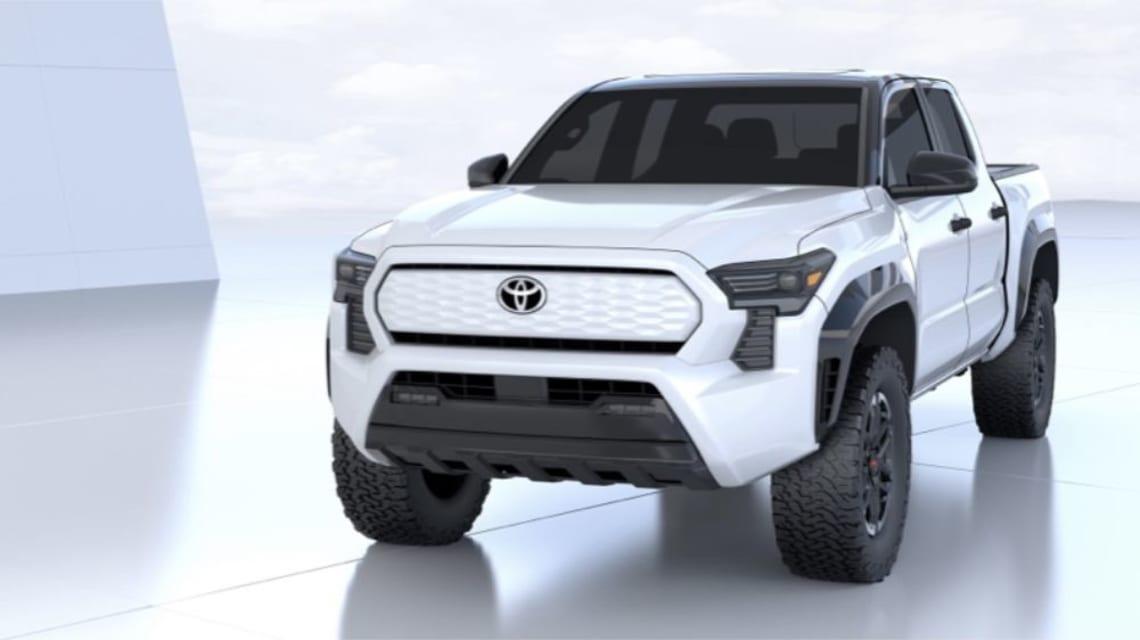
Dear double cab dinosaurs: do you think Toyota's electric HiLux won't work in Australia? You are wrong | Opinion

A Toyota HiLux electric car is approaching. Get used to it.
As soon as Toyota released the very first image of an all-electric car that would no doubt replace the diesel HiLux we know today, and possibly as early as 2024, the internet started lit up with comments about it not being a car. a real ute, and that it can't keep up with today's diesels.
Well, I have bad news for you. You're wrong.
Toyota announced a total of 16 new electric vehicles this week, including a model that appears to bear many similarities to the Toyota LandCruiser, as well as an electric answer, the FJ Cruiser.
The brand says it will invest heavily in battery technology, with energy efficiency reaching its goal of 3.5 million electric vehicle sales per year by 2030. Emphasizing that this is not some "dreamy" vision that is decades away from being realized, company chief Akio Toyoda said instead. most of the new models will appear "in the next few years" and will attract a mammoth investment of nearly $100 billion.
Toyota's long-awaited transition to an all-electric future is extremely exciting, and not just from an environmental standpoint (because the world's largest car company, finally moving into the future of electric vehicles, will soon see us hurtling down the road to a carbon-neutral car) . .
Another reason this is interesting is that an electric car will leave your diesel powered HiLux in the dust in almost every measurable way. Don't believe me? Look up, you might just see a comet flying towards you.
Let me guess: Australia is a unique, rugged landscape that simply doesn't exist anywhere else. Really? Have you ever been to the American desert? Where the sand is hotter than the surface of the sun and the only living thing for miles seems like a random cactus covered in thorns? Or South Africa? South America?
But wait, they say, we are going further than those people. We? According to research, the average Australian travels about 35 km a day. Some of us, away from our subways, of course, travel much further. But this is a tiny part of the population buying ute. If not, then why are our cities so filled with double cabs? Honestly, how many times do you drive 500, 600, 800 km in one sitting? If your answer to this question is “always”, then most likely an electric car is not for you. But for the rest of us?
It's not that I don't like modern double cabs. The HiLux is a sales beast and the new Ford Ranger looks spectacular. And don't get me started on the Raptor. But the products of today are not the products of tomorrow, and brands know this.
That's why Ford is electrifying its best-selling F-150. What's more, the Lightning model proved so popular in the US that Ford was forced to delay the ordering process after receiving 200,000 online bookings.
Equipped with a 150 kWh high-capacity battery pack, the F-131.0 Lightning will be able to travel about 483 km/s on a single charge, deliver 420 kW of power and 1051 Nm of torque, and tow a 4.5-ton monster, according to the just-released specifications.
Compare these specifications with your ute.
Ram has promised to take it one step further with its all-electric 1500 due out in 2024 and promising a whopping 660kW from a twin-motor setup and an incredible range of 800km.
Rivian has just been named MotorTrend US Truck of the Year. Then there's Tesla, GMC. The list of electric trucks is growing every day, and each of them leaves cars with a gasoline or diesel engine in the rearview.
The future is in electricity. It's time to get on board.
